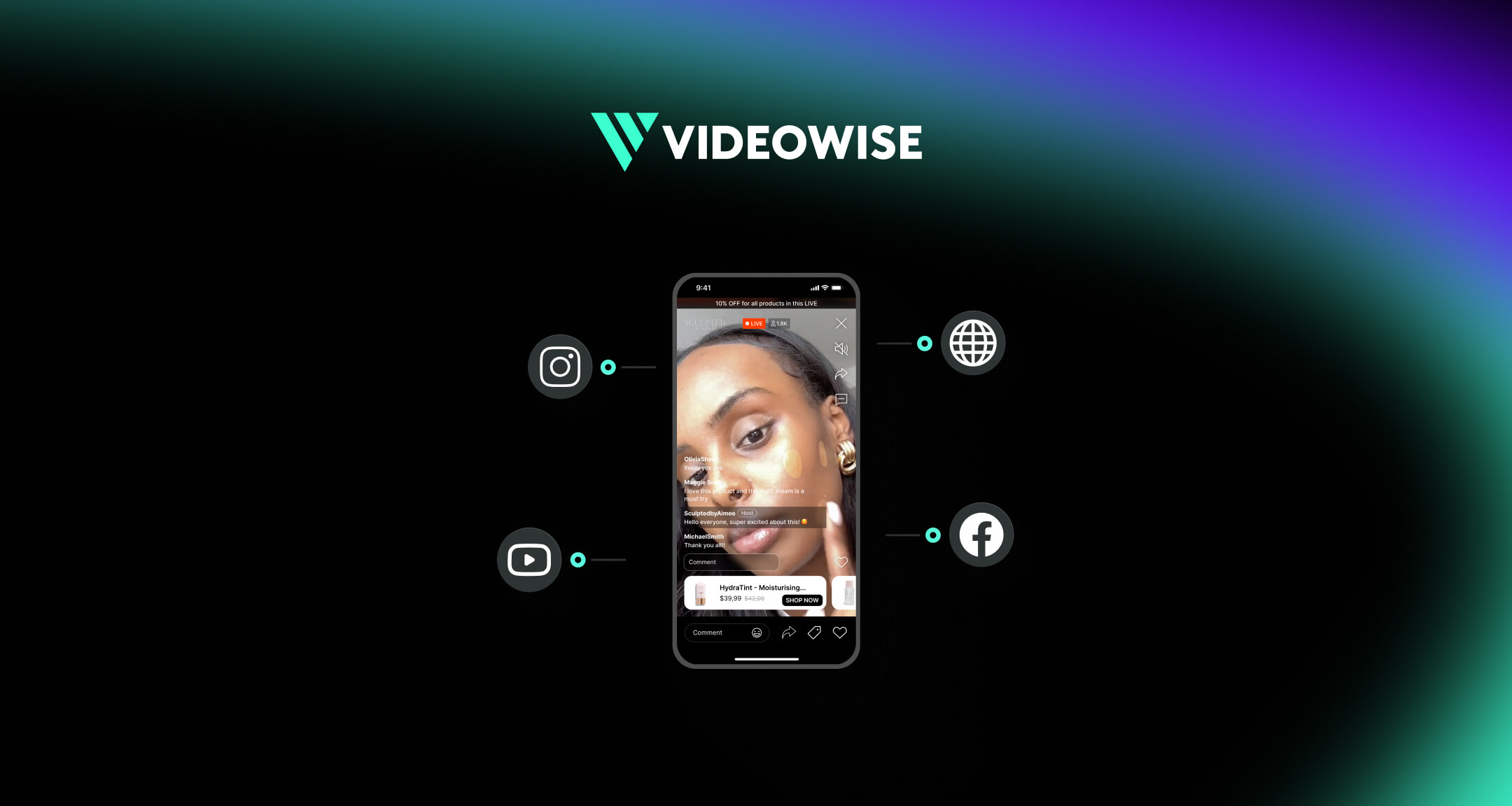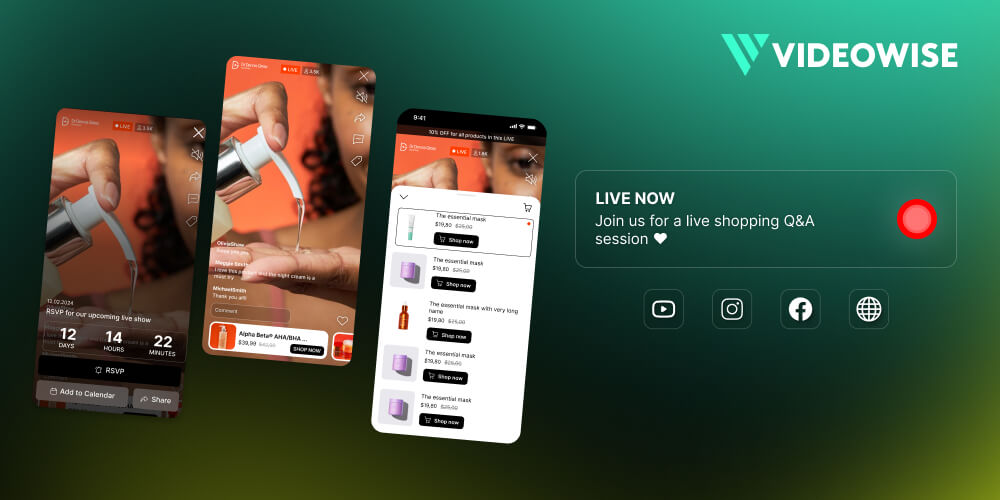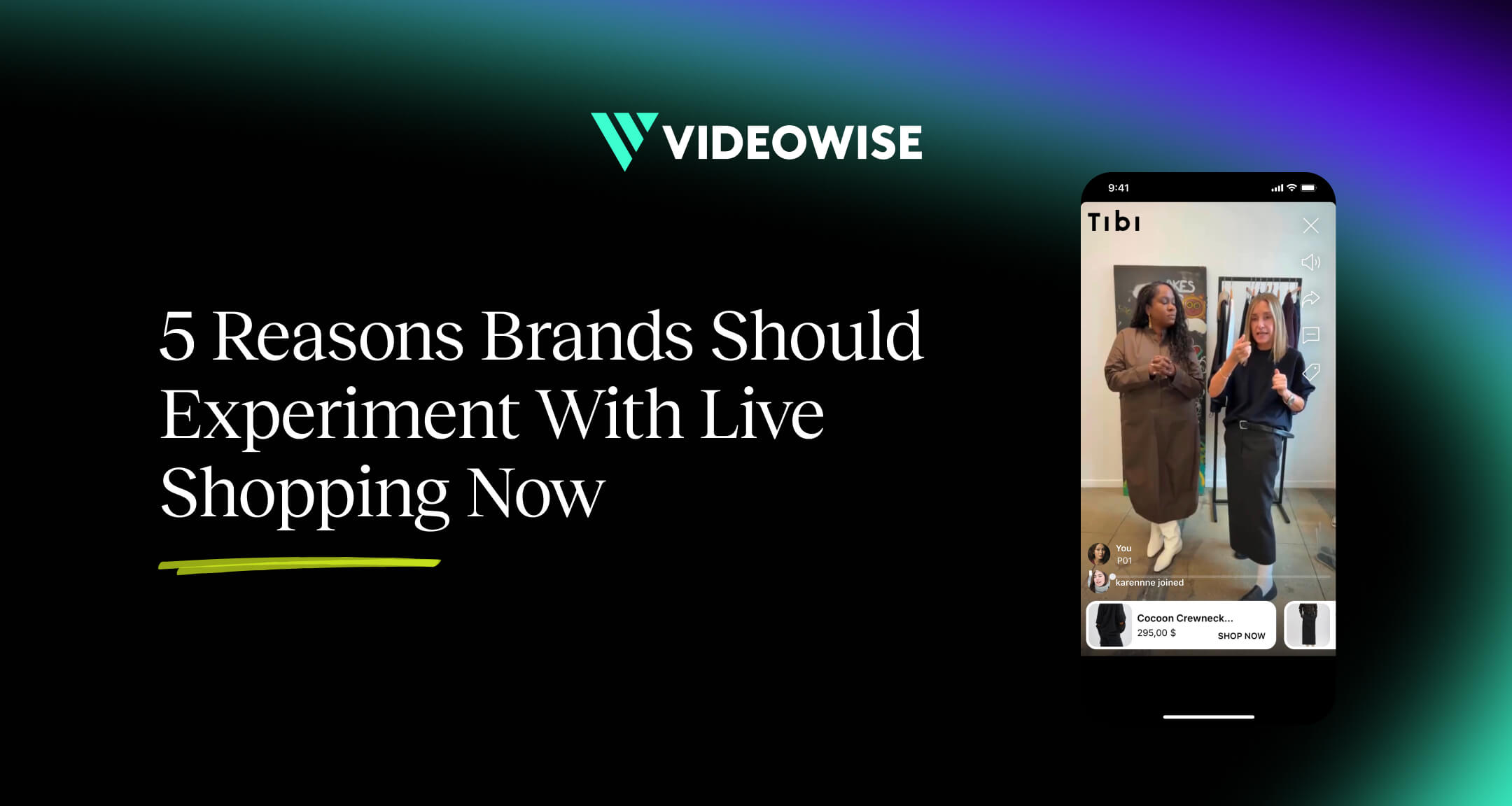Share
The way consumers shop online is evolving faster than ever. Over the past decade, ecommerce has grown from being a convenient alternative to in-store shopping into the primary channel for millions of global shoppers. But with more options available than ever, customers demand experiences that are not only frictionless but also entertaining, authentic, and engaging.
This is where live shopping comes in. Sometimes called live commerce, live video shopping, or live shopping streaming, this approach combines the interactivity of live video with the ease of online transactions. Instead of scrolling through static product photos, shoppers can watch hosts, influencers, or even brand representatives showcase products in real-time, ask questions in chat, and purchase instantly without leaving the stream.
For ecommerce brands, retailers, and D2C businesses, live shopping is no longer just a passing trend—it’s a shift in customer expectations. According to McKinsey & Company, live commerce could account for up to 20% of global ecommerce sales by 2026. . Platforms like TikTok, Instagram, YouTube, and dedicated live shopping platforms are already paving the way for this transformation.
So why should Shopify brands start experimenting now? Here are five compelling reasons.
1. Higher Conversion Rates
One of the biggest challenges in ecommerce is converting browsing into buying. Cart abandonment rates hover around 70% globally, with shoppers often leaving before completing their purchase due to doubts, lack of urgency, or too many distractions.
Live shopping directly addresses these issues.
When products are demonstrated in real-time, customers get a more complete picture of their features and benefits. They can see sizing, colors, and textures more accurately than static images allow. Hosts can address concerns, showcase comparisons, and share social proof instantly. Combined with time-sensitive offers or limited stock alerts, this creates urgency that encourages immediate action.
-
Example: A beauty brand hosting a live shopping event can demonstrate how a new skincare product applies, answer ingredient-related questions, and offer a “live-only” discount code. The combination of education, trust, and exclusivity can lift conversion rates dramatically.
-
Data Insight: According to Forbes, early adopters of livestream shopping have reported conversion rates as high as 10x compared to traditional ecommerce product pages.
Some ecommerce platforms even allow brands to embed these interactive experiences directly on their site, ensuring shoppers stay engaged without leaving the store.
2. Authentic Customer Engagement
Traditional ecommerce often feels one-sided. Brands publish content; customers browse and buy, or don’t. Live shopping transforms that static experience into a dynamic conversation.
Through live shopping events, shoppers can:
-
Ask questions in real time.
-
Request to see products from different angles.
-
Get styling or usage tips directly from the host.
-
Share feedback instantly with other viewers.
This interaction builds trust and a sense of community. Rather than pushing sales through polished ads, live shopping emphasizes authenticity. Consumers, especially younger demographics like Gen Z, value genuine interactions over scripted messaging.
And it doesn’t stop once the live stream ends. Many brands are now repurposing these sessions into on-demand shoppable videos, hosted on their ecommerce sites, to keep engagement going long after the event. Tools like Videowise help make that possible, extending the life of each event beyond its broadcast.
Retail Dive reports that U.S. retailers experimenting with live streaming have seen not just higher engagement but also repeat viewership when events are consistent.
3. Scalable Technology
Not long ago, hosting a live shopping event meant complicated setups, streaming software, and custom integrations. Today, live shopping platforms and apps have simplified the process.
Brands can choose between:
-
All-in-one live commerce platforms like Videowise, CommentSold, or Firework.
-
Social platforms with native live shopping features (TikTok Shop, Instagram Live Shopping, YouTube Live).
-
Ecommerce integrations that embed live shopping directly on Shopify, Magento, or WooCommerce storefronts.
Advanced tools now make it possible to:
-
Offer seamless checkout within the stream.
-
Track live shopping analytics in real time.
-
Sync product inventory automatically.
-
Moderate comments and questions with ease.
The good news is that scaling doesn’t require huge budgets anymore. Brands can start small, with a single product drop, a Q&A session, and gradually expand into larger, recurring events. Some solutions even let you build out permanent video shopping hubs, so live commerce becomes part of your everyday store experience.
4. Valuable Analytics
One of the biggest advantages of live shopping technology is the real-time analytics it generates. Unlike static ecommerce data, live commerce provides insights into customer behavior as it happens.
Some key metrics include:
-
Viewer engagement (comments, likes, questions).
-
Watch time per session.
-
Conversion rates per product shown.
-
ROI from each event or campaign.
-
Drop-off points in the live stream.
This data helps brands refine both their live shopping strategy and broader ecommerce efforts. For example, if analytics show that a particular product consistently drives high engagement but low conversions, brands can investigate whether pricing, positioning, or availability is the issue.
Forward-looking brands are already pairing these insights with shoppable video analytics from platforms like Videowise, which measure how on-site videos impact engagement and conversions. Together, this paints a much clearer picture of customer behaviour.
5. Competitive Advantage
Perhaps the most pressing reason to adopt live shopping now is timing. While major markets in Asia (especially China) are already mature, live shopping adoption in North America and Europe is still growing. This presents a unique window of opportunity for early movers.
-
Fashion live shopping is already gaining traction with brands showcasing new collections via interactive runway-style streams.
-
Beauty live shopping allows for tutorials, product comparisons, and influencer collaborations that feel more authentic than static ads.
-
D2C live commerce brands can leverage niche audiences and build loyal followings without competing directly with retail giants.
By starting now, brands can:
-
Differentiate themselves from competitors who haven’t yet embraced live shopping.
-
Build expertise in hosting and optimizing events while others are still testing the waters.
-
Position themselves as innovators in the eyes of customers and partners.
According to Insider Intelligence, U.S. social commerce sales are expected to reach $82 billion by 2026 meaning brands that invest in live and social shopping strategies today will have a significant head start.
A subtle advantage: brands that own their live shopping setup (rather than relying solely on social media platforms) keep traffic and conversions on their own site. That’s where tools like Videowise come in handy, helping retailers create live or on-demand shopping experiences directly within their ecommerce storefronts.
Why Now Is the Right Time
Live shopping is more than a buzzword. It’s a shift in how consumers expect to shop online, interactive, social, and real-time. With the right live shopping platform, scalable technology, actionable analytics, and strategic implementation, brands can unlock higher conversions, stronger engagement, and long-term ROI.
👉 Whether you’re a global retailer, a D2C brand, or an emerging startup, experimenting with live video shopping today isn’t just about boosting short-term sales; it’s about future-proofing your ecommerce strategy.
The question isn’t if live shopping will become a mainstream part of ecommerce. It’s when. And the brands that experiment early, using tools that let them keep shoppers engaged on their own sites, will be the ones that reap the biggest rewards.
Live Shopping Using Videowise
While there are many ways to experiment with live shopping, one of the most effective is to integrate it directly into your ecommerce store. With Videowise, brands can host live shopping events on-site, showcase products in real time, and allow customers to purchase without ever leaving the experience.
The advantage is that every interaction stays within your storefront. Shoppers don’t get redirected to third-party platforms, and you maintain full control over the customer journey.
Another powerful feature is simulcast. This lets you broadcast your live shopping event not just on your website but also simultaneously across platforms like Instagram, YouTube, or TikTok. By simulcasting, you maximize reach on social media while still keeping the shoppable experience anchored to your own ecommerce site.
Beyond live events, Videowise also helps brands:
-
Repurpose live streams into on-demand shoppable video libraries.
-
Track performance with detailed analytics on conversions, engagement, and ROI.
-
Scale easily from one-off events to ongoing video commerce strategies.
For fashion, beauty, and D2C brands especially, this creates a seamless bridge between live engagement and ecommerce performance, helping them capture both reach and retention in a single event.
Share




.jpg?width=420&height=420&name=live%20shopping%20top%205%20fashion%20(1).jpg)